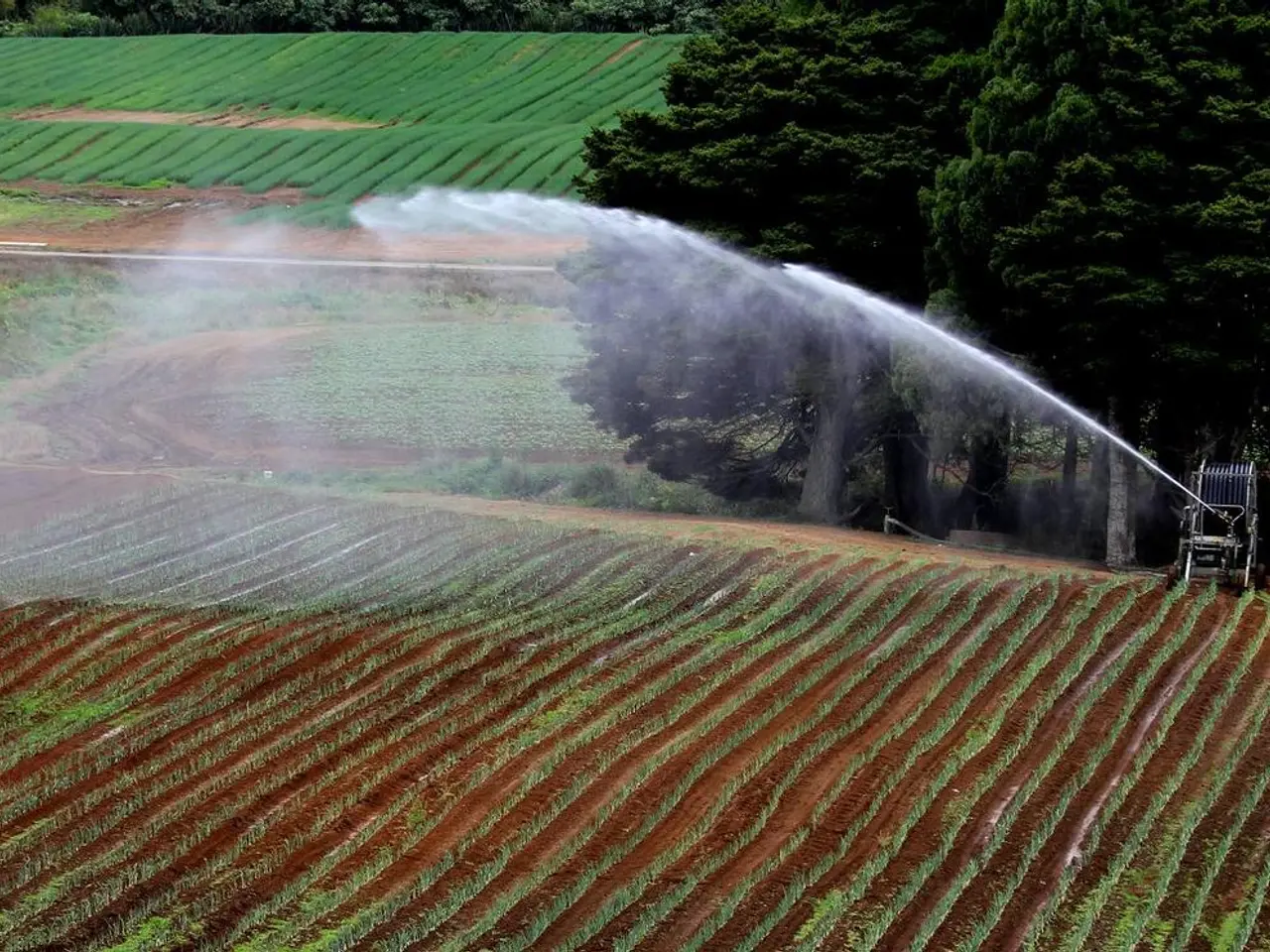Transforming Farming Operations to Carbon-Neutral through the Application of Permaculture Practices
In a bid to combat climate change, a variety of innovative farming methods are being employed, with permaculture being one of the most promising. This sustainable farming approach focuses on creating self-sustaining, biodiverse ecosystems that mimic natural patterns, reduce external inputs, and enhance soil carbon storage.
Ecosystem Mimicry and Diversity
Permaculture designs replicate natural forests and grasslands, integrating perennial plants, trees, shrubs, groundcovers, animals, and humans into resilient polycultures and guilds. This diversity naturally suppresses pests and reduces reliance on chemical inputs, which emit greenhouse gases.
Soil Health and Carbon Sequestration
By applying practices like minimal tillage, perennial planting, and organic matter recycling, permaculture enhances long-term soil stability and increases soil organic carbon levels. Healthy soils act as carbon sinks, capturing atmospheric CO2 and reducing net emissions from farming.
Water Conservation and Landscape Restoration
Techniques such as swales, rainwater harvesting, ponds, and water-harvesting pits improve water retention and reduce erosion on degraded or desertified lands. This restoration fosters vegetation growth that captures carbon and rehabilitates barren soils.
Reduced External Inputs and Closed-Loop Cycles
By designing systems that recycle nutrients and water efficiently, permaculture can reduce dependence on synthetic fertilizers, pesticides, and fossil fuel-based machinery by up to 90%. This decreases greenhouse gas emissions associated with conventional farming inputs.
Socioeconomic Empowerment and Localized Resilience
Permaculture supports local communities in creating durable, food-producing ecosystems aligned with indigenous knowledge and local conditions, enhancing food security while promoting climate adaptation.
Additional Benefits
Integrating renewable energy sources like solar or biogas further minimizes carbon emissions on permaculture farms. Utilizing green manures and cover crops helps improve soil health, make nutrients more available, and sequester carbon.
Sustainable farming practices, including carbon-neutral farming, can also financially benefit farmers by reducing input costs, saving water, and potentially earning premium prices for sustainable products.
Government Initiatives and Incentives
The Biden administration's Growing Climate Solutions Act and USDA's programs aim to help farmers get involved in carbon markets and encourage them to store more carbon in soil. The 45Z Tax Credit, which the industry wants the U.S. Department of the Treasury to finalize by January 1, 2025, could help companies adopt carbon-neutral practices in agriculture.
The Biden-Harris Administration's Investing in America agenda has set aside $300 million for better tracking of greenhouse gas emissions and carbon sequestration in farming and forestry. The USDA plans to fund a new program to help small and underserved forest landowners join voluntary carbon markets.
Case Studies
The Stewarts' farm in Australia has grown its tree and shrub cover from 3% to 18% over 30 years, with a total of 55,000 trees and shrubs, capturing 628 tonnes of CO2-equivalents each year. The Malawi Schools Permaculture Clubs program involves kids and teachers leading in permaculture, offering a way to help fight climate change.
A grass-based beef system is better for the environment, reducing emissions and storing carbon in the grassland compared to traditional livestock farming.
In conclusion, permaculture integrates ecological design, soil carbon management, water conservation, and resource cycling to develop carbon-neutral farming systems that actively mitigate climate change by reducing emissions and increasing carbon sequestration. Agriculture, therefore, plays a crucial role in fighting the global climate crisis, as farmers can help by using soil to store carbon and pull carbon dioxide from the air.
- Permaculture designs replicate natural ecosystems, integrating multiple plant species, trees, animals, and humans, creating self-sustaining, biodiverse systems that naturally suppress pests and reduce chemical inputs.
- By employing minimal tillage, perennial planting, and organic matter recycling, permaculture enhances long-term soil stability and increases soil organic carbon levels, fostering healthier soils as carbon sinks.
- Techniques such as swales, rainwater harvesting, ponds, and water-harvesting pits are used in permaculture to improve water retention, reduce erosion, and foster vegetation growth on degraded lands, ultimately capturing carbon and rehabilitating barren soils.
- Permaculture systems are designed to recycle nutrients and water efficiently, reducing the need for synthetic fertilizers, pesticides, and fossil fuel-based machinery, thereby decreasing greenhouse gas emissions associated with conventional farming inputs.
- Indigenous communities can benefit from permaculture in creating food-producing ecosystems that align with traditional knowledge and local conditions, enhancing food security while promoting climate adaptation and sustainability.
- Integrating renewable energy sources like solar or biogas in permaculture farming further reduces carbon emissions by providing sustainable energy alternatives.
- Utilizing green manures and cover crops in permaculture helps improve soil health, make nutrients more available, and sequester carbon, contributing to the overall carbon-neutral farming approach.
- The Biden administration's initiatives, such as the Growing Climate Solutions Act, USDA programs, tax credits, and funding for better tracking of greenhouse gas emissions and carbon sequestration, aim to encourage farmers to adopt carbon-neutral practices and participate in carbon markets.
- Case studies, such as the Stewarts' farm in Australia, demonstrate the success of permaculture in capturing carbon and sequestering CO2-equivalents, with tree and shrub cover growing from 3% to 18% over 30 years.
- A grass-based beef system represents a more sustainable farming method, reducing emissions and storing carbon in grassland compared to traditional livestock farming, highlighting the potential for environmental benefits through sustainable living practices in agriculture and the home-and-garden sector.





